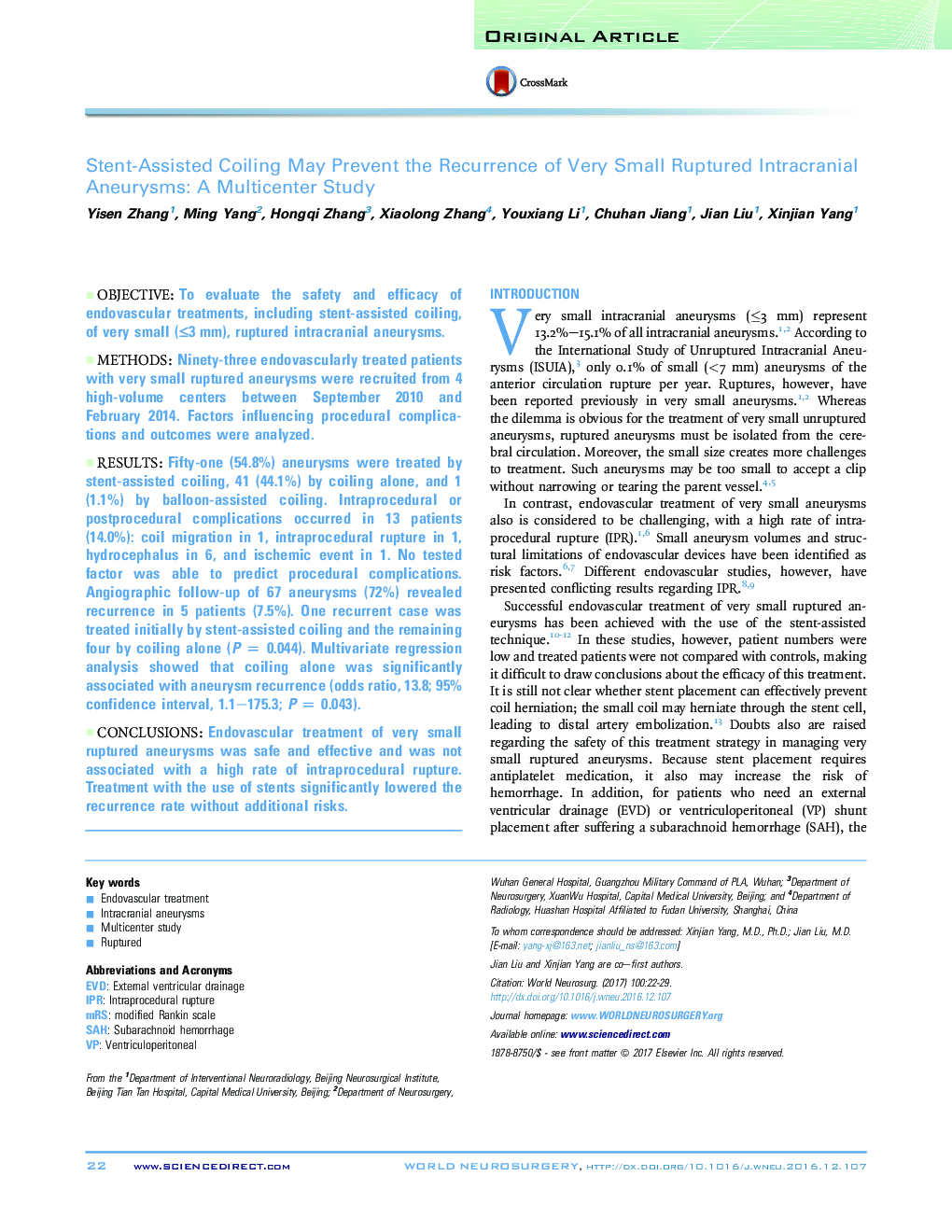| Article ID | Journal | Published Year | Pages | File Type |
|---|---|---|---|---|
| 5634485 | World Neurosurgery | 2017 | 8 Pages |
ObjectiveTo evaluate the safety and efficacy of endovascular treatments, including stent-assisted coiling, of very small (â¤3 mm), ruptured intracranial aneurysms.MethodsNinety-three endovascularly treated patients with very small ruptured aneurysms were recruited from 4 high-volume centers between September 2010 and February 2014. Factors influencing procedural complications and outcomes were analyzed.ResultsFifty-one (54.8%) aneurysms were treated by stent-assisted coiling, 41 (44.1%) by coiling alone, and 1 (1.1%) by balloon-assisted coiling. Intraprocedural or postprocedural complications occurred in 13 patients (14.0%): coil migration in 1, intraprocedural rupture in 1, hydrocephalus in 6, and ischemic event in 1. No tested factor was able to predict procedural complications. Angiographic follow-up of 67 aneurysms (72%) revealed recurrence in 5 patients (7.5%). One recurrent case was treated initially by stent-assisted coiling and the remaining four by coiling alone (P = 0.044). Multivariate regression analysis showed that coiling alone was significantly associated with aneurysm recurrence (odds ratio, 13.8; 95% confidence interval, 1.1-175.3; P = 0.043).ConclusionsEndovascular treatment of very small ruptured aneurysms was safe and effective and was not associated with a high rate of intraprocedural rupture. Treatment with the use of stents significantly lowered the recurrence rate without additional risks.
